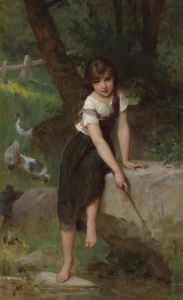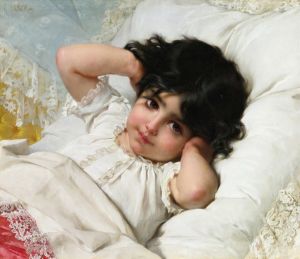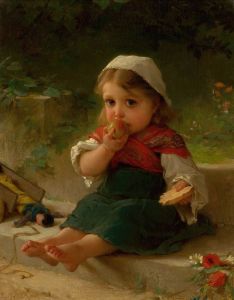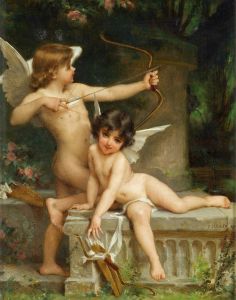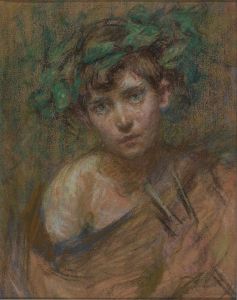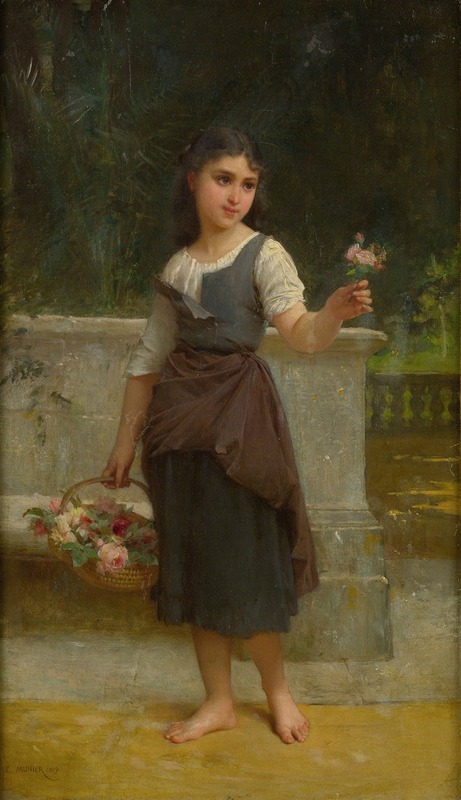
The Flower Girl
A hand-painted replica of Émile Munier’s masterpiece The Flower Girl, meticulously crafted by professional artists to capture the true essence of the original. Each piece is created with museum-quality canvas and rare mineral pigments, carefully painted by experienced artists with delicate brushstrokes and rich, layered colors to perfectly recreate the texture of the original artwork. Unlike machine-printed reproductions, this hand-painted version brings the painting to life, infused with the artist’s emotions and skill in every stroke. Whether for personal collection or home decoration, it instantly elevates the artistic atmosphere of any space.
Émile Munier was a French academic artist known for his detailed and charming depictions of children and domestic scenes. Born in Paris on June 2, 1840, Munier was a student of the renowned artist William-Adolphe Bouguereau, whose influence is evident in Munier's meticulous technique and subject matter. Munier's works often feature young children and animals, capturing moments of innocence and tenderness with a high degree of realism.
"The Flower Girl" is one of Munier's notable paintings, exemplifying his skill in portraying youthful innocence and beauty. Although specific details about the creation date and current location of "The Flower Girl" are not widely documented, the painting is consistent with Munier's style and thematic focus during his career, which spanned from the late 19th century until his death in 1895.
In "The Flower Girl," Munier presents a young girl, often depicted with a basket of flowers, embodying the purity and simplicity associated with childhood. The painting is characterized by its soft color palette and the delicate rendering of textures, from the girl's skin and hair to the petals of the flowers she carries. Munier's attention to detail and his ability to capture the subtleties of light and shadow contribute to the lifelike quality of the painting.
Munier's work, including "The Flower Girl," reflects the broader trends of 19th-century academic art, which emphasized technical skill, idealized subjects, and a polished finish. His paintings were well-received during his lifetime, appealing to collectors who appreciated the sentimental and picturesque qualities of his art. Munier's ability to convey emotion and narrative through his compositions made his work popular among audiences who favored the academic style over the emerging modernist movements of the time.
The themes present in "The Flower Girl" align with Munier's broader oeuvre, which often explored the joys and innocence of childhood. His paintings frequently feature young girls in idyllic settings, surrounded by nature or engaged in simple, everyday activities. This focus on childhood innocence can be seen as a reflection of the societal values of the period, which idealized youth and purity.
Émile Munier's legacy as an artist is marked by his contribution to the tradition of academic painting in France. While he may not be as widely recognized today as some of his contemporaries, his works continue to be appreciated for their technical excellence and the warmth they convey. "The Flower Girl," like many of Munier's paintings, remains a testament to his skill in capturing the beauty and innocence of childhood, a theme that resonates with viewers even today.
Overall, "The Flower Girl" is a quintessential example of Émile Munier's artistic style and thematic interests, showcasing his ability to blend technical precision with emotional depth. Through this painting, Munier invites viewers to appreciate the simple pleasures and fleeting moments of childhood, rendered with a masterful touch that continues to captivate audiences.









